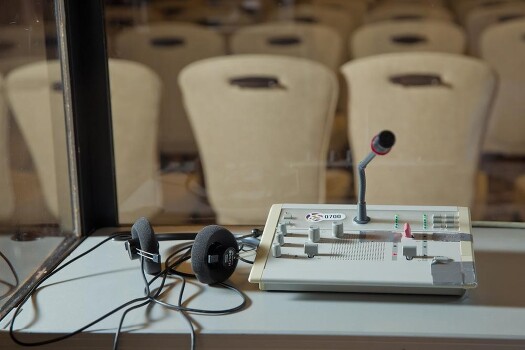Simultaneous vs consecutive, or which type of interpreting to choose?

Every event where participants speaking different languages come together very often requires an interpreter, in particular for meetings and conferences with technical content. There are two basic types of interpreting with their own specificities, each suitable for different occasions. Which events need simultaneous or consecutive interpreting?
What does good interpreting involve?
The work of simultaneous and consecutive interpreters is one of the most demanding tasks of all. It requires not only a perfect command of the languages, but also, especially in the case of simultaneous interpreting, a good knowledge of the cultural and social settings of the given country. For the interpreting to be smooth and seamless, the interpreter has to prepare themselves thoroughly and deeply focus on the speech. Are you planning an event where interpreting services will be needed? Let’s find out whether to choose simultaneous or consecutive interpreting.
What is simultaneous interpreting?
Simultaneous interpreting, also known as conference interpreting, is a type of interpreting where the speech is translated in real time, almost concurrently with the speaker, only with a slight delay. At a professional level, it always takes place in the interpreter booth where the interpreter has all interpreting equipment available.
Simultaneous interpreting is suitable mainly for large-scale events such as conferences or events with specialized technical content and with a large number of participants speaking different languages. In our practice, we always use two interpreters per language and booth, who take turns at about half-hour intervals because it is very difficult to keep absolutely focused throughout the event. The listeners are equipped with headphones to hear the selected language.
Advantages of simultaneous interpreting
- The listener gets the information in real time and may choose from a selection of languages
- The speaker does not have to interrupt their speech, which greatly saves time
- The listener’s attention is not disturbed by ambient noise filtered out by the headphones
- This is almost a word-for-word translation, so no more or less important information is lost
- The advantages listed above are convenient both for speakers and listeners and create a generally better experience
A subtype of simultaneous interpreting is the so-called whispering used in a small circle of participants speaking different languages. The drawback of this type of interpreting where interpreters whisper the translation in the client’s ear is that it distracts the attention of all listeners.
What is consecutive interpreting?
Consecutive interpreting, also known as liaison interpreting, does not use any equipment. The interpreter only relies on their memory and notes, called interpreting notes. During this type of interpreting, the speaker should make short pauses and the interpreter translates the speech in short chunks. However, there are also “highly consecutive interpreters” with a very well trained memory, who can translate up to several minutes of a speech with the help of their notes at one time.
The consecutive type of interpreting is most commonly used at business meetings, working dinners, meetings of heads of state or visits of foreign delegates, at work or in production. It is also used at court hearings or during criminal investigations; in these cases, the interpreter has to be registered with the Ministry of Justice of the Czech Republic, though.
Pros and cons of consecutive interpreting
- It is much simpler as regards to organization
- The interpreter is in the immediate vicinity of the speaker and has greater leeway so the translation is stylistically better
- No cost of interpreting equipment
- Cannot be used at a meeting of participants speaking multiple languages, only for parties speaking two different languages
- The interpreted speech is shorter than the original and so some information may be lost
- The delivered speech is not continuous and a 30–50% time loss should be expected
Are you in need of nterpretation services? You can affect their quality
The quality of interpreting does not only depend on the interpreter’s abilities. There are also other factors that the client may influence. So if you’re preparing an event that requires interpreter services, remember to book interpreting services in advance because most good interpreters are booked up for months.
Once the interpreter confirms the date, provide them with all important information concerning the content, counterpart or duration of the event. An essential part of the interpreter’s preparation is the glossary of terms to be used at the conference or business meeting, or references to the historical background. This will greatly help in the interpreter’s preparation and saves time for both parties.
Our team of project managers can prepare a tailored interpreting offer for you. We always target on interpreters who are not only experienced, but whose expertise also meets the client’s requirements.













